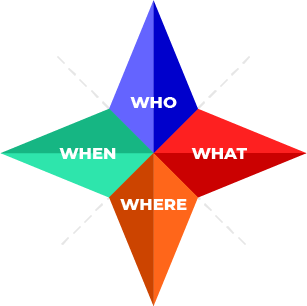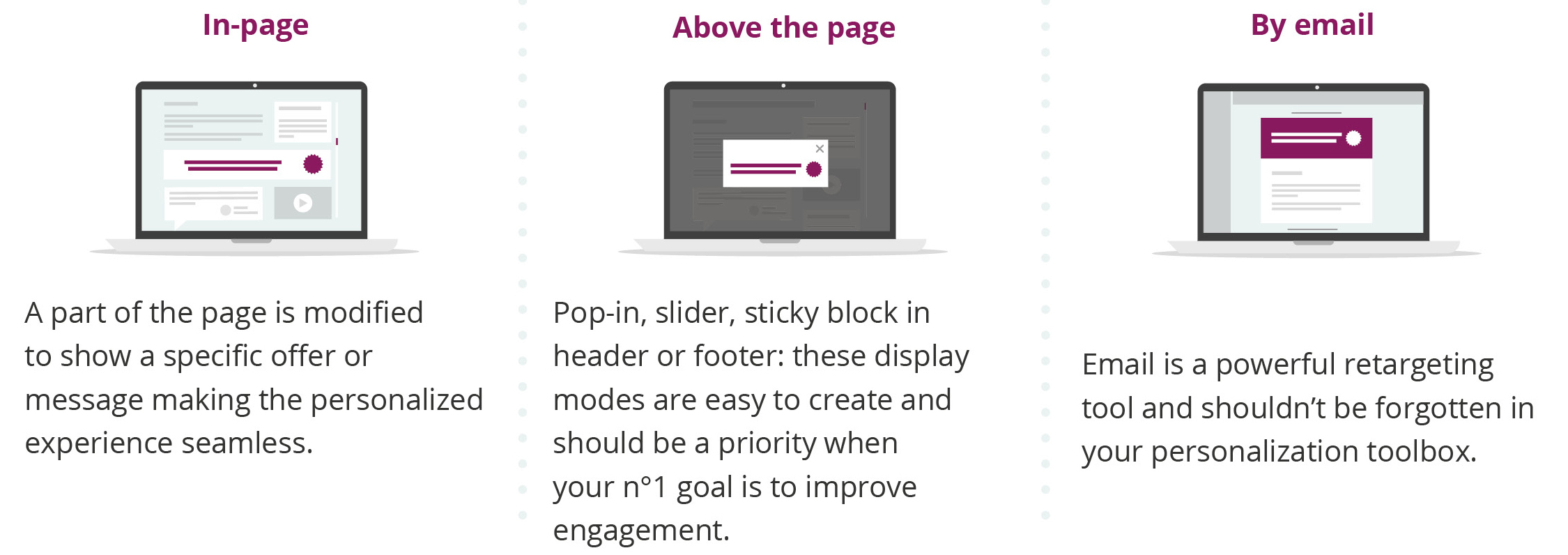
The 4 stages of successful personalization
Research shows that the vast majority of marketers believe personalization will help them achieve their objectives. For example, a study in eMarketer found that 80% said it was crucially or very important to increasing revenues. Yet 91% acknowledged that their company needs to improve upon its personalization capabilities.
Marketing personalization can take one of several forms: it affects many parts of the marketing mix and is handled differently depending on the type, size and challenges of a company. The approach will also change depending on the company’s current level of experience with customer segmentation and according to the extent of its product range.
However, regardless of the company concerned, the same basic rules still apply. These are what we’re going to explain in this blog.
1 Personalization: a (very) demanding market
INCREASINGLY DEMANDING CUSTOMERS
In a store, a (good) sales assistant will be able to quickly assess a customer’s needs and then deliver an experience that is adapted to what the individual shopper is looking for. Consequently, the chances that the consumer will make a purchase are much more likely.
You only need to spend three minutes on LinkedIn to see a stream of blog articles highlighting the importance of the “human element” to the relationship between consumers and brands. This is due to an increase in the demands of customers who are looking for an experience that is much more tailored to their expectations - they want a unique and personalized experience.
These more demanding customers are driving a need for brands to use solutions that are capable of offering web visitors contextualized experiences that are perfectly adapted to their needs. The fact is that today’s web users are much more fickle and impatient. They won’t hesitate in looking at your competitors if they don’t find exactly what they want. And on the internet, rivals are only ever a click away.
Despite this need, there is still a lack of personalization on the internet. Very often, sites offer an experience that is exactly the same for everyone, regardless of the web user’s profile, interests and demographics (such as age, language and country of residence).
The main reason for this used to be a lack of technology solutions for personalization, but this has changed. It is now possible to deploy platforms that can define or even discover those visitor segments that have the highest potential for improving conversion rates, allowing you to adapt your content, messages and offers for these groups in real-time.
AS MANY SCENARIOS AS THERE ARE WEB USERS
There are as many types of purchasing behavior as there are visitors on a website. Additionally, if you have thousands or even millions of products in stock, the profiles and interests of your visitors and their browsing behavior will be extremely complex.
This is where personalization comes into play. It enables you to create customized experiences for your visitors and customers, based on who they are (cold data) or on the way in which they behave on your website (hot data). In other words, personalization offers the possibility of contextualizing messages, offers and interactions with each visitor according to their profile and their journey on your website.
2 The 4 stages of marketing personalization
To help you really understand personalization, we have broken it down into 4 essential stages.

1. DETERMINE WHO YOU ARE TARGETING
A personalization strategy can only be effective if it is correctly targeted. This is why Kameleoon’s first action, before looking to optimize the browsing experience, is to analyze your visitor data in real-time.

You need to start your personalization strategy by analyzing your audience. This is the most important stage, and sometimes the most overlooked, in the personalization process.
This is something we see everyday - people confuse the practice of personalization with the actions they launch aimed at improving personalization. However, before any actions (for example, pop-ins) can be launched, you need to lay the groundwork, i.e. analyze your visitors and think about how you can adapt an action to a particular target.
What is a typical visitor segment?
A visitor segment is a typical profile (or persona) that represents part of your audience and is made up of visitors with the same characteristics.
Let’s take an example: you have 500,000 unique visitors per month on your e-commerce site. You’re not going to create 500,000 different customer journeys (not manually, at least). This would be a) madness and b) impossible. So, when we personalize manually, it is much more judicious to create segments that encompass visitors with similar characteristics.

Find out how we helped tire retailer Allopneus target its visitors based on their location.
2. WHY DO YOU WANT TO PERSONALIZE?
After identifying your visitor segments, you’re going to create and launch personalized experiences for each of them. The content and messages that you’re going to deliver depend on your goals:
Generate leads
A typical lead-generation action could be to offer downloadable content that is relevant to the visitor’s interests.
Convert
A discount coupon presented to the right person at the right time may be just the push they need to convert.
Retain
If a visitor comes to your media website to find out about tennis news, a typical journey personalization would be to invite them to sign up for a targeted newsletter that means they receive relevant content directly in their inbox.
Reactivating
When a web user has not visited your website for some time, you can look to reactivate them, such as by sending them a personalized email with offers on the products they have already viewed.
3. WHERE SHOULD YOU DISPLAY YOUR PERSONALIZATIONS?
At this stage, you know who you’re targeting and have decided on the type of personalized experience that you want to put in place to reach your goals. Now you need to choose a location to display your personalizations. For example, a sticky header, banner, pop-in, pop-up, block, or email.
Note that a good personalization is one that visitors don’t explicitly notice.
Learn how parenting community Mumsnet increased click-through rates by 89% by providing personalized content.
4. WHEN SHOULD YOU DISPLAY YOUR PERSONALIZATIONS?
How you manage marketing pressure determines the success (or the failure) of a personalization campaign. You should therefore decide the frequency with which you’re going to target your audience with personalization actions.
What is marketing pressure? It measures the number of times that you are in contact with an individual over a given period. The challenge is to find the happy medium between overly discreet and intrusive communication. You can assess marketing pressure according to these criteria:
- duration: for how long will the personalization be effective?
- frequency: how frequently is the personalized message pushed out?
- scenario (or order of appearance): you can match when the personalization is displayed to the stage of the visitor journey.
- priority ranking: a user can belong to two segments (for example, they can like sports content on pay TV, but also the comedy channel). To avoid any conflict, establish a system to prioritize your segments and adapt the content based on where the visitor is along the conversion funnel.
- intensity (or capping): the personalization message can be limited to a specific number of visitors (for example, the first 50) or even to a certain number of impressions per person.

Find out how French retailer Auchan increased sales by displaying a sales banner personalized to visitor interests.
3 Key points to remember
1. Who: which visitors should you target?
2. What :which experiences should you offer them?
3. Where: on which parts of your site should you display your personalizations?
4. When : how much marketing pressure should you exert on your visitor segments?
Once these four pillars are understood, personalization will no longer hold any mysteries for you and you’ll be able to deliver ongoing, successful campaigns. To learn more visit our resources section.





